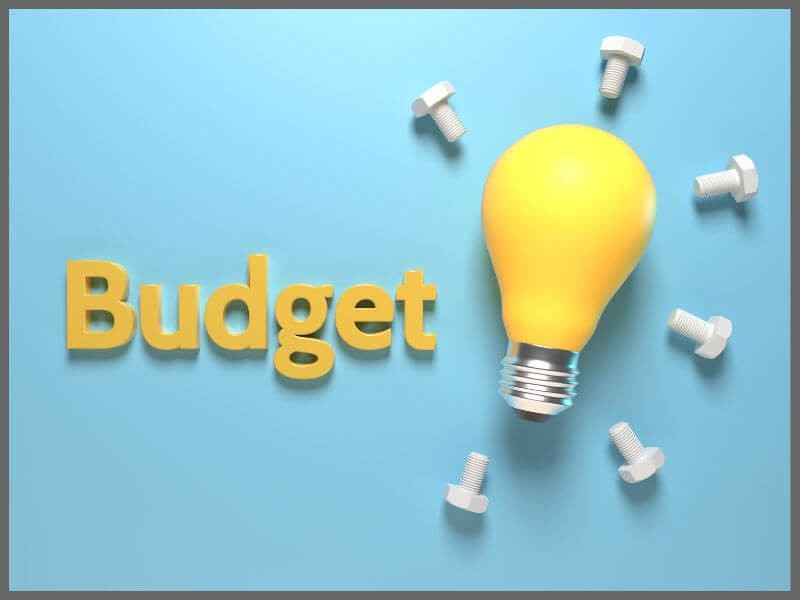Do you think you have a digital strategy? But it’s not working? That’s because you’re probably shooting randomly, based on your own assumptions about what might work. Yes, it might work once, but in the long run – no chance. Learn how to create the ideal digital strategy for your business.
We've probably written this many times before, but here it is once again – if your company is not online, it’s as if it doesn’t exist.
However, just being present is not enough, you need to know how to be present.
That’s where a digital strategy is crucial – a plan that determines where you will invest your time, effort, and money in order to attract, retain, and convert ordinary users into regular customers/clients.
The problem is that many companies start with digital marketing without a clear plan. They open an Instagram profile, throw a few euros into ads, post a blog here and there – and then wonder where the results they expected are.
A digital strategy is not just a bunch of unrelated marketing activities, but a precise plan that takes into account your goals, market, and resources.
What is a digital strategy and what are the most common mistakes
A digital strategy is a well-thought-out, long-term plan that defines how a company will use digital channels to achieve its business goals.
This can include SEO, advertising, social media, email marketing, content marketing, and much more.
Without a clear strategy, all marketing activities become random and ineffective.
Examples of a good digital strategy:
- Netflix – uses personalized recommendations and automated email marketing to increase user engagement
- Nike – combines social media, influencer marketing, and storytelling through video content
- Tesla – relies on a strong community and content marketing instead of traditional advertising
Most common mistakes when creating a digital strategy
- Marketing without a goal
If you don’t know what you want to achieve, you can’t expect results. “More followers” is not a goal. “10% more sales through digital channels in 6 months” – that is a goal.
- Too many channels, too little focus
There is no point in being on every social media platform. It is better to choose 2-3 channels with the highest potential and maximize their use.
- Ignoring data
If you don’t track analytics, you’re just guessing. Google Analytics, Facebook Pixel, and tools like Hotjar can show what really works and what doesn’t.
- Too much sales content
People don’t want just ads. They want stories, education, and entertainment. 80% of your content should add value, while 20% can be sales-oriented.
- Neglecting user experience
A poorly designed website or a slow mobile version can ruin any marketing campaign.
Understanding your business and target audience
Before you start creating a digital strategy, you need to know the answers to three questions:
- What does your company want to achieve? – Higher sales? Brand recognition? Customer loyalty?
- Who are your customers? – How old are they? Where do they spend time online? What problems are they trying to solve?
- Who are your competitors and how do you differentiate from them? – Competitor analysis helps identify opportunities they might be missing.

How to define business goals that guide a digital strategy
Business goals in digital marketing must not be vague, such as "we want to grow online."
Without clearly set goals, a digital strategy loses direction and becomes a series of random activities that consume the budget without real return on investment.
To achieve results, goals must be set according to the SMART principle – Specific, Measurable, Achievable, Relevant, Time-bound.
- Specific
A goal must be clear and precise. Instead of saying "we want to increase sales," it is better to say: "We want to increase sales by 20% within the EU market through Google Ads campaigns."
- Measurable
Every goal should have clear metrics that allow for tracking success. Examples include the number of conversions, CTR (click-through rate), or CAC (cost per acquisition).
- Achievable
The goal must be realistic given the resources and market conditions. If a company has just launched, expecting to gain a million social media followers in three months is not realistic.
- Relevant
A goal should be directly linked to business success. Increasing the number of newsletter subscribers is useful only if there is a strategy in place to convert those subscribers into customers.
- Time-bound
Setting deadlines helps measure progress and adjust the strategy. Instead of saying "we want better SEO," it is better to define: "Achieve 10,000 monthly visits through SEO optimization within the next nine months."
Social media - where are your customers and how to reach them
Do not waste time or money on platforms your audience does not use. Each platform has its own audience:
- Facebook – great for targeted ads and B2C communication
- Instagram – a visual platform, excellent for brands with strong storytelling
- LinkedIn – B2B, ideal for networking and lead generation
- TikTok – an essential channel if you are targeting a younger audience
- YouTube – video content has a high engagement rate and long-lasting impact
Google advertising - when to use Google ads for quick results
Google advertising is an efficient way to reach customers who are already searching for your products. If you need immediate visibility, Google Ads can bring quick conversions and are useful for:
- Quick visibility
- Targeting users based on search intent
- Local marketing
However, if ads are not properly optimized, they can become a bottomless pit.
SEO optimization - a long-term strategy for organic growth
If you want long-term results, SEO is essential. This means you must be patient. The most important elements of SEO are:
- High-quality content
- Proper use of keywords
- Technical website optimization
- Building backlinks
How to integrate digital channels into one effective strategy
Good digital marketing is not a series of random, disconnected tactics, and your marketing channels should not be isolated. You should not think of SEO, ads, and social media as separate entities. Everything must be integrated and connected into a cohesive strategy, such as:
- Using SEO to drive organic traffic to your website
- Targeting people who have already visited your website through remarketing ads
- Educating and converting leads into customers through newsletters
- Sharing blog content on social media to increase reach

Budgeting and scaling a digital strategy
Digital marketing without a budget is (almost) impossible. The question is not whether you will invest, but how much and where.
The budget should be allocated across different digital channels, and its distribution depends on your goals:
- If you want quick results, invest most of your budget in Google Ads and paid social media campaigns.
- If you aim for long-term growth, combine SEO, content marketing, and email strategies with smaller but consistent investments.
- If you are building a brand, video production and collaborations with influencers can bring significant recognition.
There is no universal formula, but the "70-20-10" rule often works:
- 70% of the budget goes to channels that already deliver results
- 20% to experimenting with new formats
- 10% to innovation and testing
If your campaign delivers a positive ROI (return on investment), there is no need to hesitate – increase the budget.
Signs that it is time to scale:
- Campaigns generate conversions at a favorable cost
- Organic traffic is growing at a steady pace
- Your business model can handle a higher influx of customers
How to optimize digital marketing costs?
The goal is not just to spend more but to spend smarter. How can you maximize every euro?
- Test A/B ad variations – small changes (button color, headline, call to action) often result in a higher CTR
- Use remarketing – it is cheaper than traditional advertising and targets people who have already shown interest
- Track performance in real-time – do not wait until the end of the campaign to figure out what works and what doesn’t
The most common digital strategy mistakes and how to avoid them
Even the most experienced marketers can fall into the "traps" of digital marketing. That’s why you should also know a few marketing tricks.
Here are three common mistakes that can ruin your campaign:
- A strategy that is too broad or too narrow
If you target everyone, you are actually targeting no one. On the other hand, if you are too narrowly focused, you may miss opportunities. The solution?
Set a primary audience, but also test other segments – sometimes the biggest customers come from unexpected niches.
- Neglecting mobile optimization and user experience
If your website loads slowly on a mobile device, you can say goodbye to half of your potential customers.
Google already penalizes poorly optimized mobile websites, and users certainly won’t wait for your page to load.
Speed, responsiveness, and intuitive design are (still) unquestionable standards.
- Choosing the wrong target audience and communication channels
There is nothing worse than wasting money on people who have no interest in your offer. Before you spend a cent on ads, research where your customers spend their time online.
B2B companies often waste their budget on Instagram, while LinkedIn could bring better results.

Digital strategy – a long-term commitment
There are no shortcuts to success in digital marketing – it is a strategy that must be maintained in the long run. Those who win are the ones who know what they are doing, who they are doing it for, and how to communicate it.
Tips for a winning digital strategy:
- Define clear goals – without them, there is no direction.
- Choose channels that make sense for your business.
- Combine organic and paid growth methods.
- Test, analyze, and adjust your strategy as you go.
- And most importantly – be adaptable.
The digital world is changing at an incredible speed, and those who adapt the fastest stay on top.
It’s time to set up a strategy that delivers real results – contact us, and we will create it for you.




